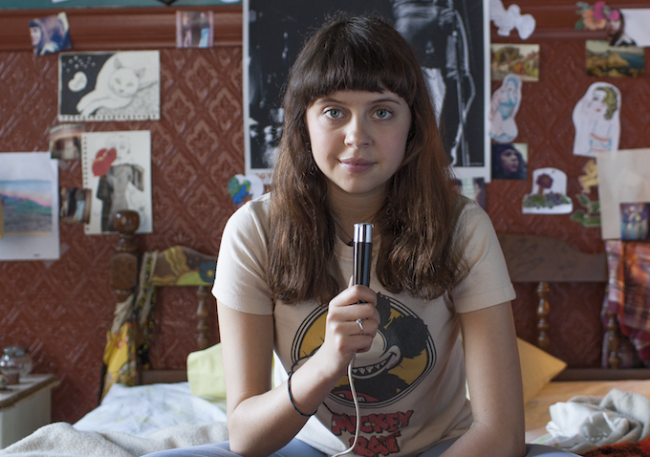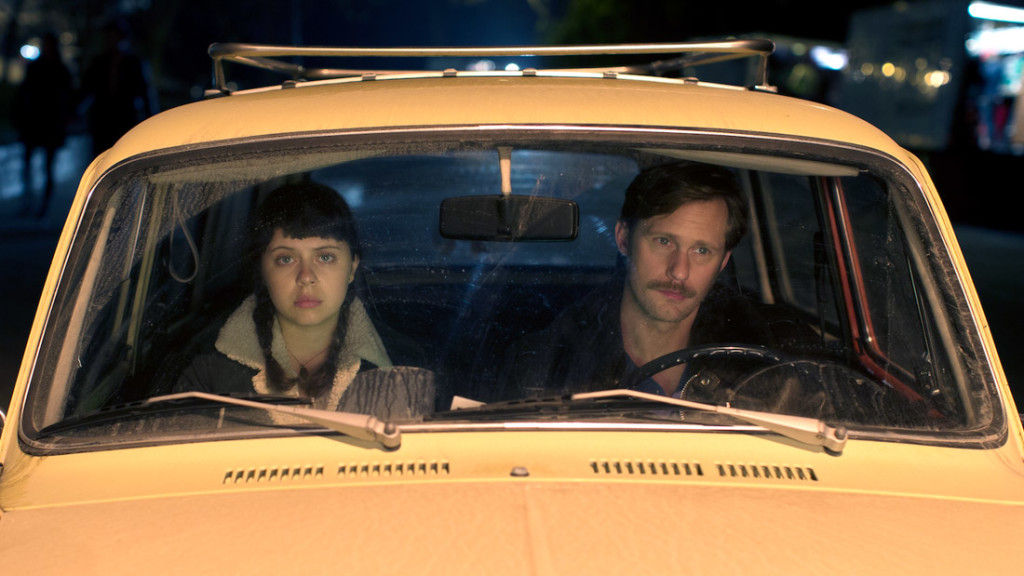
My first thought after seeing The Diary of a Teenage Girl was “where was Minnie to tell me that it was okay to have these thoughts about love and not being captive to other people’s whims when I was 15?” My mind shot back to an otherwise inconsequential scene in the film. Minnie sits in English class, receiving notes from a guy who she doesn’t know has a crush on her. But what stuck with me was the fact that the English class was studying The Catcher in the Rye. Like many young high schoolers forced to read it, I was enthralled by Holden’s candidness; it was my first time experiencing such a truthful narration through teenagedom, where not everything had to have a “point.” I wasn’t being whacked over the head with morals, I was simply passively involved in Holden’s life. From then, I hungered for more of those types of books, because they rang true to my experiences.
But they weren’t completely true. The first person, intimate coming-of-age story still remains a male dominated canon. When I read Sylvia Plath’s The Bell Jar, as a female analogous to Catcher per an English teacher’s suggestion, I had to defend myself to my peers. No, I won’t grow out of my Plath “phase,” I wanted to hear a girl my age narrate her life and not tell me how to fix where she went wrong.
The problem revealed by my constant defending of Plath is this: in most of what we consume, the teenage girl lives within extremes. They are irrational, lusting over everyone and anything. They are manic pixie dream girls, conceptual beings that yearn to be ‘fixed’ by men. They are irrational, overdramatizing any and every inconsequential event. You would think a film that largely revolves around a 15-year-old girl engaging in a sexual relationship with a 35-year-old man would play to those extremes–but first-time writer/director Marielle Heller’s The Diary of a Teenage Girl reveals the humanness that exists beneath such a time of growth.
Based on Phoebe Gloeckner’s 2002 graphic novel, and set in free-loving 1976 San Francisco, the film explores Minnie’s (an absolutely riveting 23-year-old Bel Powley) prolonged sexual relationship with an alluring slacker, Monroe (Alexander Skarsgard), her mother’s (Kristin Wiig) boyfriend. What could have been portrayed as a trippy period piece with an emphasis on shock value, by Heller’s hand is instead a glimpse into the complexities of growing up. Heller destroys all extremes that burden teenage girls by giving us a visual narrative that gives agency to Minnie in telling her coming-of-age story the way she wants to.
For a movie about statutory rape, the 1970s (and all the smoke and substances therein), and girlhood, it could be easy to pass judgment on these characters. However, Heller crafts and directs a script that objectively gives each character their fair share. A movie with several sex scenes (with a character who is a minor), Heller does not seek to glorify or condemn the actions. She does not frame her shots in a way that makes the sex scenes “sexier” or more terrifying, but letting naturalness tell the story. In the vein of naturalness, the characters need to make the same mistake a couple of times before they grow from it. Minnie is enticed by the prospect that an older man finds her alluring before she figures out and takes initiative herself to grow past the danger of her situation. Isn’t that what teenagedom is, making the same messy mistakes over and over again?

But the naturalness of the teenage years is more enthralling during moments where Heller delves into Minnie’s unique frame of mind. Sporadically, the film explodes into rotoscoped animated sequences, an extension of Minnie’s talent as a cartoonist and perspective of the world. In one such sequence, after a fellow teenager criticizes Minnie after having sex with him for being too sexually knowledgable, we see a gargantuan Minnie, drawn the way she sees herself, terrorizing the streets of San Francisco, squishing all objects and humans in her path. She is drawn accentuating where she wish she could change her body–her thighs, her nose, her shoulders. Despite the fantastical nature of the sequence, it rings true. I resonated with animated Minnie, feeling monstrous when I know my power in a situation comes off as “too strong” to others.
While I felt like I, too, have daydreamed Minnie’s animation sequences, the inclusion of scenes with Minnie, alone, talking into her tape recorder gives a truthful candidness to the piece. The film opens with Minnie’s voice stating, “I just had sex today. Holy shit.” From that moment, we know that we are in Minnie’s mind and she is not editing her speech for an audience. We are getting a teenage girl, plain and simple, unbridled from the absurd expectations society places upon them. Through the candidness, the truth is comforting. In a later scene with her tape recorder, she asks, “I wonder if there’s someone out there I don’t know about who’s in love with me.” Minnie gives us the thoughts that I as a teenage girl was too afraid to ask aloud. By showing a female character on screen asking these things, Minnie breaks the notion that a teenage girl who addresses the complexities of their emotions is taboo and off limits. It’s okay to think these things, and we all have gone through it, and this conversation and subject matter amongst teenage girls should remain open.
But, as it stands in the real world, we see diary-keeping as such a feminine action, something that furthers the stereotype of the emotional female. However, when men write a fictionalized diary, making it published and public, it validates the infinite space society holds for male narrative, while quashing the little room women have. That’s the paradox of popularized first person coming-of-age stories: when we hear a boy intimately narrate his life, it is bold and touching, but when a girl does so, it is emotional and troubling. She becomes judged, as the details that make her voice unique are used to scrutinize her weaknesses.
So, tell your younger relatives to ignore the R rating and engross themselves in what they’re going through. See this film for the characters that you never had to help you through. See this film for the characters that you still need, because we are all still changing and life is still just as messy. See this film because your story is valid and important. To close with Minnie’s last words to her tape recorder: “This is for all the girls when they have grown…” and still are growing.
***
Photos courtesy of here and here
